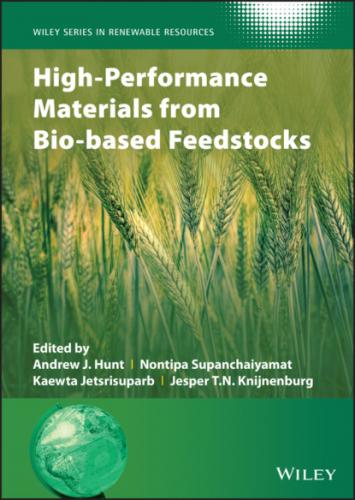67 67. Georgakilas, V., Otyepka, M., Bourlinos, A.B. et al. (2012). Functionalization of graphene: covalent and non‐covalent approaches, derivatives and applications. Chemical Reviews. American Chemical Society 112 (11): 6156–6214. https://doi.org/10.1021/cr3000412.
68 68. Lee, H.C., Liu, W.W., Chai, S.P. et al. (2017). Review of the synthesis, transfer, characterization and growth mechanisms of single and multilayer graphene. RSC Advances 7 (26): 15644–15693. https://doi.org/10.1039/C7RA00392G.
69 69. Zhao, G., Wen, T., Chen, C. et al. (2012). Synthesis of graphene‐based nanomaterials and their application in energy‐related and environmental‐related areas. RSC Advances 2 (25): 9286–9303. https://doi.org/10.1039/C2RA20990J.
70 70. Gao, M., Pan, Y., Huang, L. et al. (2011). Epitaxial growth and structural property of graphene on Pt(111). Applied Physics Letters 98 (3): 33101. https://doi.org/10.1063/1.3543624.
71 71. Hernandez, Y., Nicolosi, V., Lotya, M. et al. (2008). High‐yield production of graphene by liquid‐phase exfoliation of graphite. Nature Nanotechnology 3 (9): 563–568. https://doi.org/10.1038/nnano.2008.215.
72 72. Moon, I.K., Lee, J., Ruoff, R.S., and Lee, H. (2010). Reduced graphene oxide by chemical graphitization. Nature Communications 1 (1): 73. https://doi.org/10.1038/ncomms1067.
73 73. Wang, H., Li, Z., and Mitlin, D. (2014). Tailoring biomass‐derived carbon nanoarchitectures for high‐performance supercapacitors. ChemElectroChem 1 (2): 332–337. https://doi.org/10.1002/celc.201300127.
74 74. Wang, Y., Zheng, Y., Xu, X. et al. (2011). Electrochemical delamination of CVD‐grown graphene film: toward the recyclable use of copper catalyst. ACS Nano 5 (12): 9927–9933. https://doi.org/10.1021/nn203700w.
75 75. Shams, S.S., Zhang, L.S., Hu, R. et al. (2015). Synthesis of graphene from biomass: a green chemistry approach. Materials Letters 161: 476–479. https://doi.org/10.1016/j.matlet.2015.09.022.
76 76. Du, Q.S., Li, D.P., Long, S.Y. et al. (2018). Graphene like porous carbon with wood‐ear architecture prepared from specially pretreated lignin precursor. Diamond and Related Materials 90: 109–115. https://doi.org/10.1016/j.diamond.2018.10.011.
77 77. Shi, J., Wang, Y., Du, W. et al. (2016). Synthesis of graphene encapsulated Fe3C in carbon nanotubes from biomass and its catalysis application. Carbon 99: 330–337. https://doi.org/10.1016/j.carbon.2015.12.049.
78 78. Dumesic, J.A., Huber, G.W., and Boudart, M. (2008). Principles of heterogeneous catalysis. In: Handbook of Heterogeneous Catalysis (ed. G. Ertl, H. Knözinger, F. Schüth and J. Weitkamp). Online. Wiley https://doi.org/10.1002/9783527610044.hetcat0001.
79 79. Chen, J., Wang, M., Wang, S. et al. (2018). Hydrogen production via steam reforming of acetic acid over biochar‐supported nickel catalysts. International Journal of Hydrogen Energy 43 (39): 18160–18168. https://doi.org/10.1016/j.ijhydene.2018.08.048.
80 80. Liu, W.J., Jiang, H., and Yu, H.Q. (2015). Development of biochar‐based functional materials: toward a sustainable platform carbon material. Chemical Reviews 115 (22): 12251–12285. https://doi.org/10.1021/acs.chemrev.5b00195.
81 81. Chellappan, S., Nair, V., Sajith, V. et al. (2018). Synthesis, optimization and characterization of biochar based catalyst from sawdust for simultaneous esterification and transesterification. Chinese Journal of Chemical Engineering 26 (12): 2654–2663. https://doi.org/10.1016/j.cjche.2018.02.034.
82 82. Weber, K. and Quicker, P. (2018). Properties of biochar. Fuel 217: 240–261. https://doi.org/10.1016/j.fuel.2017.12.054.
83 83. Zhao, S.X., Ta, N., and Wang, X.D. (2017). Effect of temperature on the structural and physicochemical properties of biochar with apple tree branches as feedstock material. Energies 10 (9): https://doi.org/10.3390/en10091293.
84 84. Vidal, J.L., Andrea, V.P., MacQuarrie, S.L., and Kerton, F.M. (2019). Oxidized biochar as a simple renewable catalyst for the production of cyclic carbonates from carbon dioxide and epoxides. ChemCatChem 11 (16): 4089–4095. https://doi.org/10.1002/cctc.201900290.
85 85. Cao, X., Sun, S., and Sun, R. (2017). Application of biochar‐based catalysts in biomass upgrading: a review. RSC Advances 7 (77): 48793–48805. https://doi.org/10.1039/c7ra09307a.
86 86. Chia, C.H., Gong, B., Joseph, S.D. et al. (2012). Imaging of mineral‐enriched biochar by FTIR, Raman and SEM‐EDX. Vibrational Spectroscopy 62: 248–257. https://doi.org/10.1016/j.vibspec.2012.06.006.
87 87. Lin, Y., Munroe, P., Joseph, S. et al. (2012). Nanoscale organo‐mineral reactions of biochars in ferrosol: an investigation using microscopy. Plant and Soil 357 (1–2): 369–380. https://doi.org/10.1007/s11104‐012‐1169‐8.
88 88. Tasim, B., Masood, T., Shah, Z.A. et al. (2019). Quality evaluation of biochar prepared from different agricultural residues. Sarhad Journal of Agriculture 35 (1): 134–143. https://doi.org/10.17582/journal.sja/2019/35.1.134.143.
89 89. Feng, D., Zhao, Y., Zhang, Y. et al. (2016). Effects of K and Ca on reforming of model tar compounds with pyrolysis biochars under H2O or CO2. Chemical Engineering Journal 306: 422–432. https://doi.org/10.1016/j.cej.2016.07.065.
90 90. Lee, J., Kim, K.H., and Kwon, E.E. (2017). Biochar as a catalyst. Renewable and Sustainable Energy Reviews 77: 70–79. https://doi.org/10.1016/j.rser.2017.04.002.
91 91. Feng, D., Zhang, Y., Zhao, Y. et al. (2018). Improvement and maintenance of biochar catalytic activity for in‐situ biomass tar reforming during pyrolysis and H2O/CO2 gasification. Fuel Processing Technology 172: 106–114. https://doi.org/10.1016/j.fuproc.2017.12.011.
92 92. Liu, Y., Paskevicius, M., Wang, H. et al. (2020). Difference in tar reforming activities between biochar catalysts activated in H2O and CO2. Fuel 271: 117636. https://doi.org/10.1016/j.fuel.2020.117636.
93 93. Sun, H., Feng, D., Zhao, Y. et al. (2020). Mechanism of catalytic tar reforming over biochar: description of volatile‐H2O‐char interaction. Fuel 275: 117954. https://doi.org/10.1016/j.fuel.2020.117954.
94 94.
